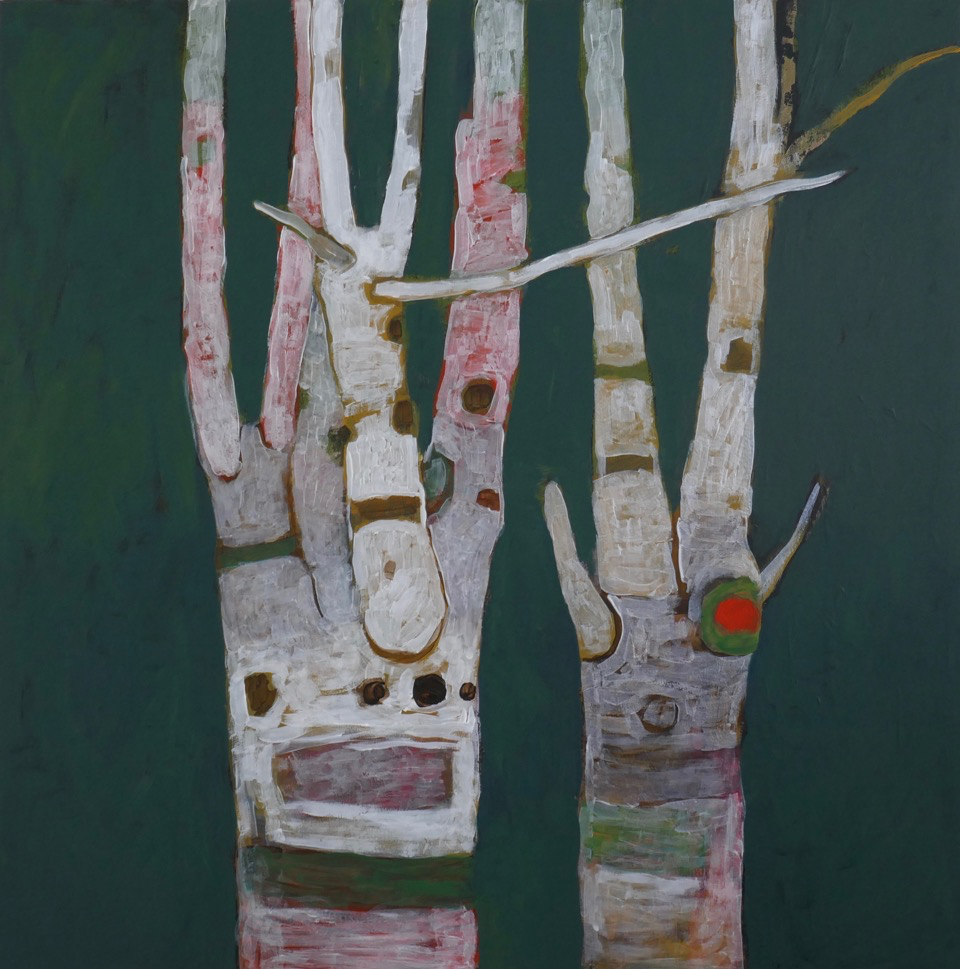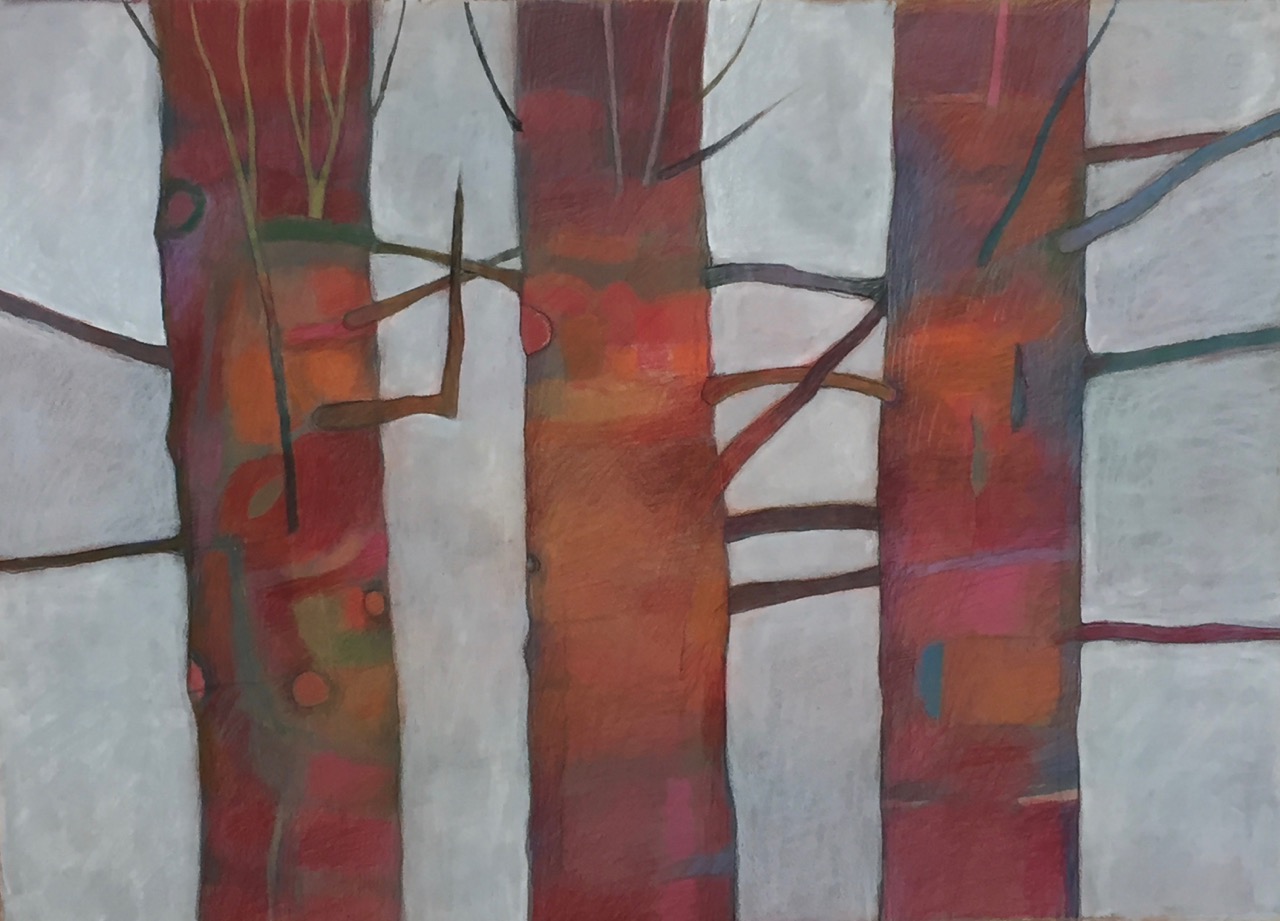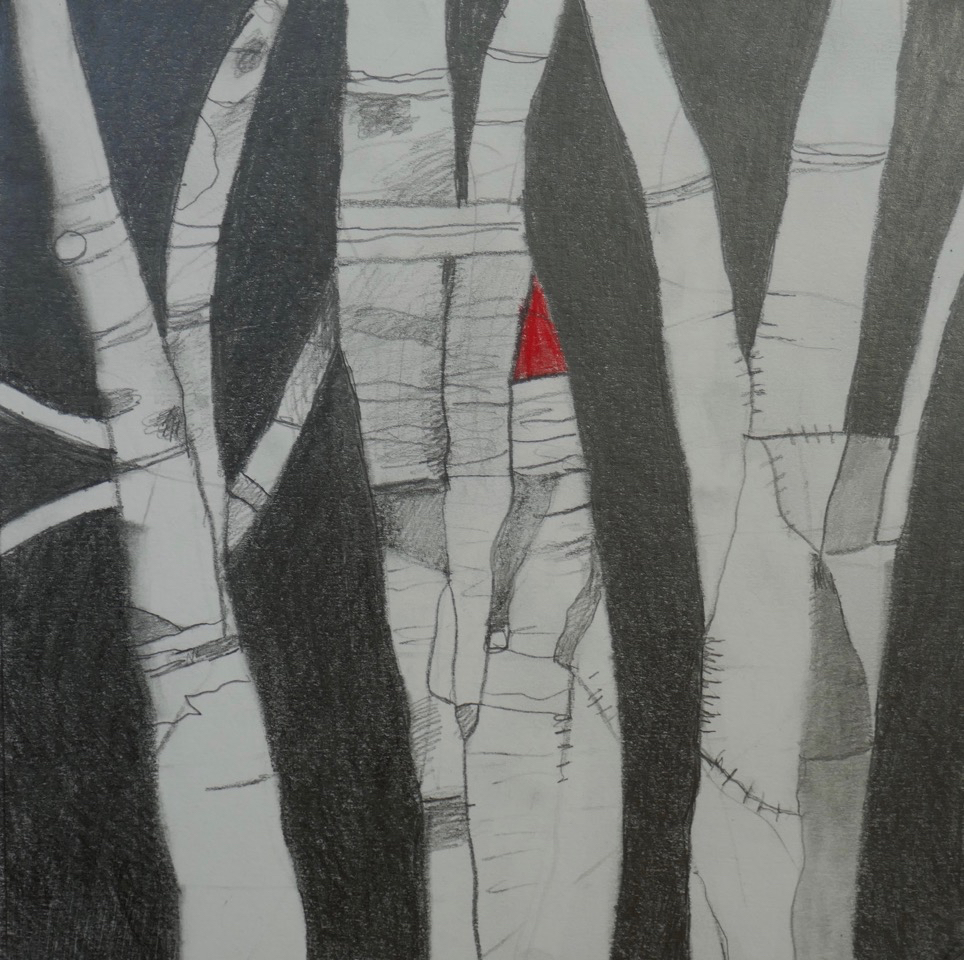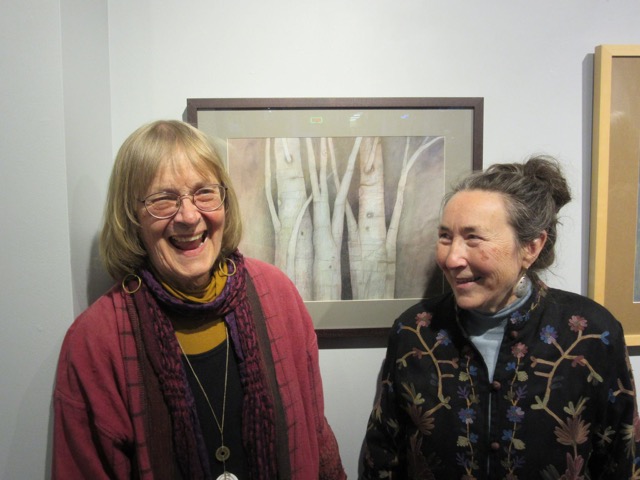Configurations, New Work by Joyce Koskenmaki at the Copper Country Community Arts Center’s Kerredge Gallery

Configurations, CCC Art Center’s Kerredge Gallery, Installation image photo of artist and director by Eric Munch. Photos of art courtesy of artist.
For many years, my wife and I have kept an eye out for the art work of Joyce Koskenmaki. Every time we pass through the town of Hancock Michigan on our return to our home in Michigan’s Keweenaw Peninsula we stop at the Copper Country Community Arts Center hoping to see, among other artists, a new Koskenmaki drawing or painting. Her remarkable palette, finely constructed surfaces, eloquent drawing and moody allegorical sensibility never fail to translate the northern landscape into unique lyrical compositions.
During our last trip, we had the opportunity for a brief visit to her studio in an old Hancock elementary school building, as she was preparing her paintings for her exhibition, “Configurations, New Work by Joyce Koskenmaki,” at the Community Arts Center. Serenaded by what sounded like Sibelius sonata, roughly, but touchingly, performed somewhere in a distant classroom by music students, we found our way to her studio.
A little hindered by a recent fall and surgery she introduced us to her studio and new work and as we explored she told me a little about herself and the new work. After studying painting at the University of Iowa and a full career teaching art in a number colleges, including eight years at Kenyon College, she returned to her home in the Keweenaw to settle and make art. Being of Finnish descent Koskenmaki might find a particularly homey familiarity in the Finnish culture there in Hancock–many streets have Finnish names, Finlandia University is located there and even the Kaleva Café is named after the visionary Finnish Epic poem, The Kalevala—and the atmosphere of this northern town smacks of typical towns in Finland. Most importantly the enchanting landscape of the Keweenaw, albeit much of the forests were decimated by a hundred years of copper mining, inspire Koskenmaki’s dialogue with nature.
She explained that at the University of Iowa she worked in a mainly abstract expressionist style and her encyclopedic website has many extraordinary examples of her abstract sensibility as well as an array of figurative and abstract oil paintings, water colors and pencil drawings.

Joyce Koskenmaki, “Two Old Birches,” acrylic on panel, 20”X20”
Koskenmaki knows trees. Unlike most landscape artists who struggle with the seeming chaos of the forest, Koskenmaki knows the tree through the forest. She knows how to see the bush, its unique moments and its articulate statements, like only a northern forest woman can.
She clearly listens to them and knows their idiosyncrasies. She knows their moods and the relationship between them and in characterizing them she uses all of her talents. Her drawing of trees could be said to be anthropomorphic but that would minimize their stature. They are their own beings. Their complexion is composed of amazing tinctures of light and dark from a panoramic cosmetic kit. Her drawing explores with delicate sympathy their articulate lines and are composed of deft touches of the brush and the spaces between them carry a rich theatrical presence.
In the Kalevala, this great oral epic poem of the Finland, nature is an active drama, and its characters—ancient mythic characters, trees, plants, the sky, animals, the sea—play out the drama of the origins of the Finnish people. It is a passionate battle between poets, warriors, and lovers in the northern wilderness. In the past Koskenmaki has illustrated the Kalevala with great understanding and brings that vision to her characterization of trees in the new work.

Joyce Koskenmaki “Three old red pines,” watercolor, color pencil, casein, “18×24”
In her watercolor of three old red pines the complexion of the bark is saturated in deep reds and orange and the prickly, out-reaching branches explain the edgy, tentative relationships of that world. There is a passage in the Kalevala of dialogue of three pines that she may be illustrating but the watercolor itself does the job of creating an almost Shakespearean stage for them.

Joyce Koskenmaki, Joyce Koskenmaki, Two old birches, acrylic on panel, 20”x20” “The Heart,” pencil and color pencil, 8”x8”
Koskenmaki’s drawings of the birch tree perhaps more than the watercolors show an anthropomorphic indulgence in the representation of their bark being sutured together like so many parts of the human body. Her own and her husband’s recent surgeries have perhaps sensitized her to this perception of the fragility of nature itself. In fact, in many of the birch tree renderings there is a direct depiction of the interwoven twigs and branch system that correlates to the architecture of the human heart. In all of her work there is an omnipresent sense of her own being, her dramatic hand, in the making of her work.
There’s an active art scene in the Michigan’s Keweenaw Peninsula area with many interesting painters especially. The nearby town of Calumet has two galleries including former Detroiter Tom Rudd’s Galerie Boheme which shows Rudd’s smart sculptural work and his wife, Margo McCafferty’s fine architectural landscapes. In the past the Copper Country Community Center has shown many Detroit artists including “Driven: Motor City Art,” (2007), an exhibit curated by Rick Vian and Sue Carman Vian which included an amazing selection of 21 Detroit artists.

Joyce Koskenmaki and Kerredge Gallery Director Cynthia Cote
“Configurations: New Work by Joyce Koskenmaki” continues at the Kerredge Gallery through November 4, 2017.
